Company history
117 years of Fleurop
Fleurop will celebrate its 117th anniversary in 2025. The floricultural organisation has experienced decades of social, economic and technological change. Through all these upheavals and changes, one thing has always remained the same: The passion of florists and employees for the art of floriculture. This is at the heart of the organisation, which has around 5,000 local partner florists throughout Germany and around 50,000 partner florists in 150 countries around the world. Fleurop sends thousands of flower orders around the globe every day.
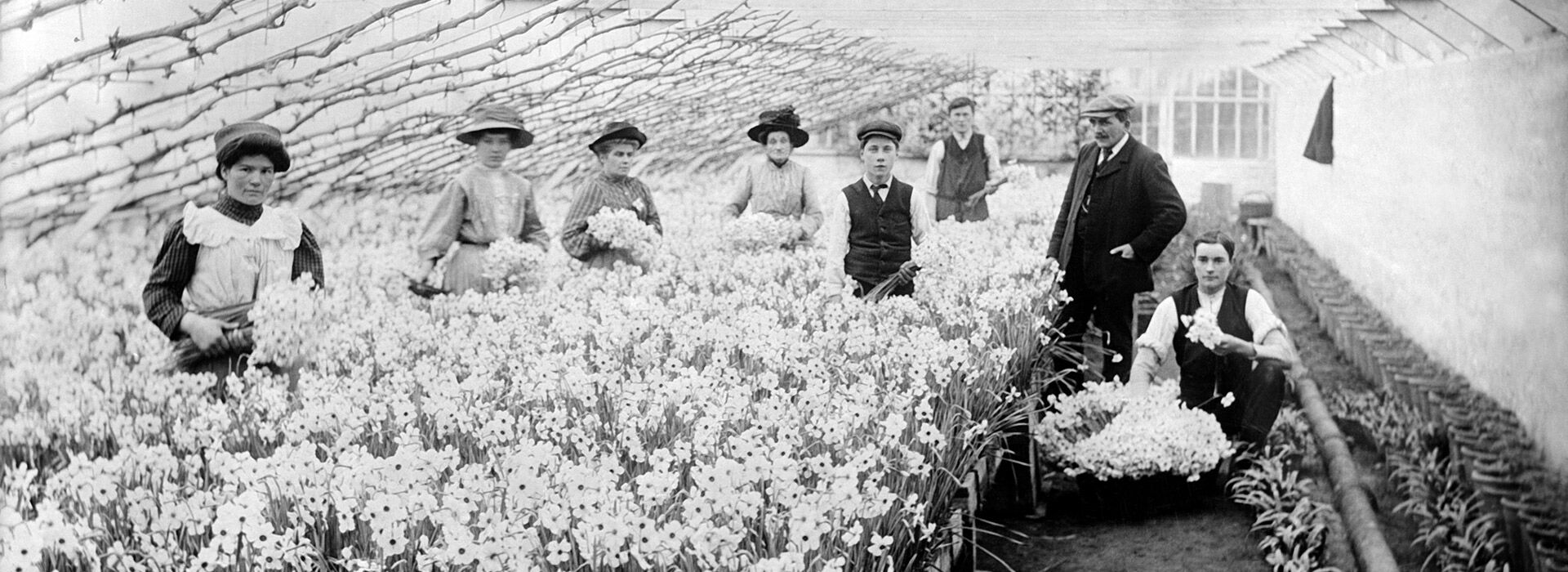
Max Hübner - a man of vision
The origin of the Fleurop idea
"These are eventful days for the world. Athletes compete for Olympic gold in London, an earthquake in Sicily claims 84,000 lives, the General Motors Company is founded in Detroit [...]. And while the first open-air family swimming pool in Berlin-Wannsee is opened to music, the Reichstag censures the Kaiser for his lack of restraint in foreign affairs. The events are recorded in almost minute detail. Only one event of global significance remains unmentioned: the year is 1908 and the foundation stone for the international organisation of Fleurop is laid in a small flower shop in Berlin's Prinzenstrasse." (Fleurop anniversary magazine, 1978)
These almost dramatic words open the Fleurop chronicle in the anniversary magazine for the organisation's 70th anniversary in 1978. At first glance, the comparison with events of global political and social significance may seem exaggerated - but on closer inspection it is not far-fetched. Max Hübner's idea, on which Fleurop is still based today, changed the future of an entire industry. The principle was as simple as it was convincing: instead of sending a bouquet of flowers by courier, post or air freight on a journey lasting several days, he simply arranged for a colleague at the delivery address to deliver the order - a groundbreaking development! By sending a telegram, the order could be placed quickly.
While the number of members of the Flower Donation Society grew steadily in the following years, Max Hübner was already striving for another goal: an international organisation. The First World War prevented this for many years. It was not until 25 March 1927 that the decisive meeting of international associations took place in Zurich, from which the Fleurop Interflora Network was born. The election of Max Huebner as the first president was a clear recognition of his successful 20 years of pioneering work.
We owe the principle on which Fleurop AG is still based today to a man whose interests and commercial talents extended far beyond floristry. Max Hübner was able to realise his idea by having the foresight to take advantage of technological advances. Because it was based on a financially successful business model, it was able to grow. His idea will endure in the future because it is based on the professional ethos that all florists still share today: the desire to make people happy with flowers across all borders.

Photo: Fleurop archive
1908–1933
The Fleurop idea was born at a time of change. Progressive industrialisation was changing working life and threatening traditional crafts. People were moving to the cities. A growing desire for beauty and nature spread rapidly, and allotments and garden colonies sprang up. Cafes, music halls, restaurants and theatres were adorned with all kinds of floral decorations to add colour and joy to the dreariness of urban life.
To strengthen the industry, the „Verband der Deutschen Blumengeschäftsinhaber“ ((V.D.B.), Association of German Flower Shop Owners) was founded in September 1904, with Max Hübner as its chairman. The Berliner was the owner of a specialist flower shop in his birthplace, Prinzenstrasse in Kreuzberg. As chairman of the association, he not only sought to recruit new members, but above all to standardise training and raise the profile of the art of floristry.
Hübner was quick to recognise the benefits of international trade: Even before he became president, he imported flowers from the Riviera and often sent bouquets as far away as St Petersburg. He was therefore well aware of the difficulties of shipping flowers. This gave him the brilliant idea on which Fleurop is still based today: Not the bouquet itself should be sent on its journey, but the order, which would then be handed over to a qualified florist near the recipient.
In 1908, Max Hübner and 98 colleagues founded the "Blumenspenden-Vermittlungs-Vereinigung" (B.V.V.) - now known as Fleurop AG - to put his idea into practice. To realise his idea of arranging flower orders, Max Hübner took advantage of advances in telecommunications: he developed the Fleurop telegram key so that flower orders could be sent to the florist carrying them out as quickly as possible. The aim was to save text, and therefore money, in the costly process of transmitting orders by telegram, without losing any information. The sequence of code words in the telegram key was strictly defined and contained all the information that the florist executing the order needed for successful delivery. By 1913, Fleurop already had 350 specialist shops as members, and by 1919 the number had grown to 1,300 German and 133 international members.
Despite its success, Hübner always saw room for improvement and never tired of making changes to help the organisation and the industry. He did this from Zurich, having moved to Austria at the end of the 1920s.
In 1927, the name "Fleurop" appeared for the first time for the European organisation (Latin "flores europae" = "flowers of Europe"). From then on, the B.V.V. unofficially called itself "Deutsche Fleurop" (German Fleurop) and was officially registered as "Deutsche Fleurop e. V." in 1931.
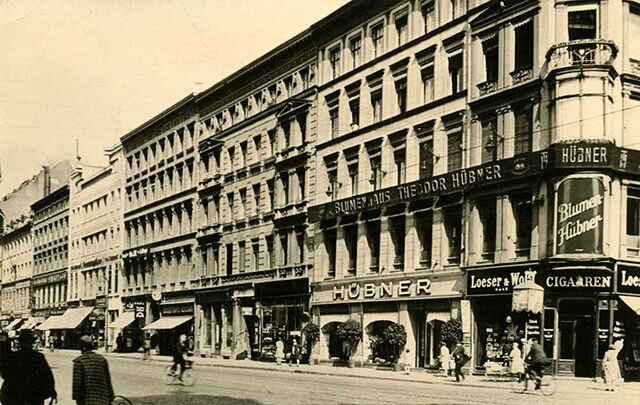
Photo: Private archive Jörg Zauber, Dusseldorf
1933–1945
The apparent economic recovery after the end of the First World War boosted society's general propensity to buy and strengthened the retail sector, including the floristry industry. For Fleurop, this meant increased sales and a strong international network. However, costly invoicing, language and exchange rate problems soon necessitated the establishment of separate European offices, which were successively set up in Rome, London, Paris, Prague, Oslo, Copenhagen, Helsinki, Stockholm, Vienna, Zurich, The Hague and Brussels.
In the rapidly changing political climate, the association felt the effects of National Socialism. As a non-NSDAP member, Max Hübner had to resign from all his offices. All craft associations (including the V.D.B.) were dissolved and voluntary associations had to submit to the coercive organisations of the fascist system. Control was now completely in the hands of the imperial state. The chairman of the new Ornamental Plant Distributors' Association was at the same time a member of the board of Deutsche Fleurop e.V.. This was allowed to continue, but had to comply with the rules of the authorities. Trading with other countries was now prohibited.
VHowever, increased scrutiny and pressure from the Inland Revenue soon led to structural changes. In the view of the Inland Revenue, the benefits of the association were primarily economic rather than idealistic, as would have been appropriate for an association. It was therefore advisable to set up a limited company. In the same year, work began on the construction of a separate administrative building in Berlin.
The rationing of goods at the beginning of the Second World War did not initially cause Fleurop any financial losses - only the shortage of labour, which had to be compensated for by overtime, had a negative impact on the business. The mood in the company - as in the country as a whole - was one of grief and uncertainty. Many members had been killed or missing in action during the war.
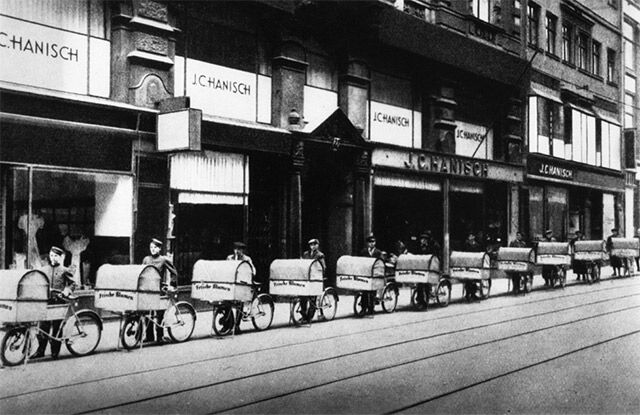
Photo: Private archive Blumen Hanisch, Frankfurt am Main
1945–1951
After the Second World War, there was a shortage of everything. The administration building in Steglitz was misappropriated and used by the magistrate, as many of the office buildings had been destroyed in bombing raids. Office equipment, furniture and important forms were confiscated. Only three Fleurop employees were allowed to continue using the basement room to clean up and sort files. However, most of the records and documents were irrevocably damaged during the war.
The cold winter of 1946 made the situation even worse. Despite support from abroad, there was a shortage of food and fuel. To compensate for the lack of food, it was decided that only 10 per cent of the land could be used to grow cut flowers. This made them an absolute luxury product, sold at high prices "under the table".
In 1946, an international Fleurop congress was held for the first time. However, Germany was not included - a consequence of the war that could not be ignored. The three main organisations - European Fleurop, the British Union and the American F.T.D. - merged to form the new world federation "Interflora". The globe with mercury was chosen as the logo.
Max Huebner did not live to see the development of the World Federation. He died in Zurich on 11 November 1946. Florists from all over the world sent bouquets and wreaths in his honour. His ideas, his commitment to the flower industry and his constant striving for innovation still characterise Fleurop today.
Within Germany, florists in the West slowly began to reorganise themselves into zonal associations and in 1949 - at the first general meeting after the war - decided to rejoin the international organisation Interflora. It was a good decision, as it led to a rapid increase in sales. Fleurop GmbH once again flourished in the community.
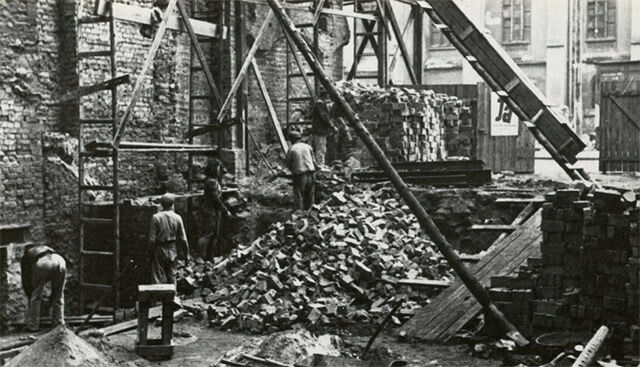
Photo: Private archive Blumen Hanisch, Frankfurt am Main
1951-1968
The 1950s was the time of the economic miracle, which saw the profits of companies in both parts of the country - but especially in the West - soar. This was also the case for Fleurop GmbH. In 1952, Fleurop reported a 40 per cent increase in sales, which the company hoped to increase by stepping up its advertising. The importance of advertising was analysed and confirmed in various surveys. For example, "Fleurop" was already a household name for 85 per cent of those surveyed.
The global heyday of marketing had arrived. A reminder service was introduced to remind customers of recurring events such as birthdays or anniversaries, and in 1961 the customer magazine "Bunte Blumenwelt" (Colourful World of Flowers), which still exists today, was published for the first time. Valentine's Day, which had previously only been celebrated in France and England and had become a cult thanks to the Americans, established itself as an additional reason to give flowers and was marketed effectively. The first Fleurop television advertisement was also broadcast at this time.
The surge in orders triggered by the German national football team's legendary victory in the 1954 World Cup was completely unexpected. The "Miracle of Bern" motivated many well-wishers to send bouquets of congratulations. A first Fleurop advertisement in cinemas also boosted sales.
This success made it possible to build a new office building in Berlin-Lichterfelde for the company's 50th anniversary in 1958. Fleurop AG is still based here today.
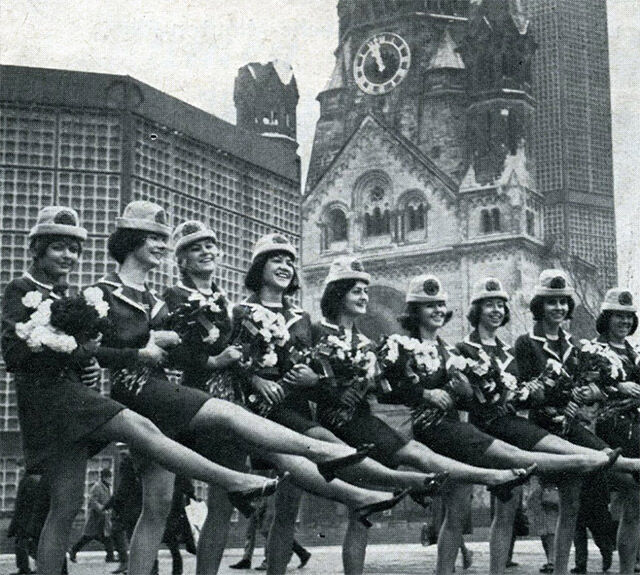
Photo: Fleurop archive
1968-1989
At the end of the 1960s, a social change was taking place in Germany. Society was getting younger and needs were becoming more post-materialistic. Consumer behaviour was also changing: the general recession led to a high degree of price sensitivity. At the same time, customers were becoming more demanding and quality conscious. Fleurop also experienced a decline in sales during this period of economic weakness. In 1968, for the first time since the end of the war, the company reported negative sales of minus 0.1 per cent - not much, but a bitter setback for a company accustomed to success. Especially because the reasons were so complex. In addition to the recession, the main cause was competition from petrol stations, supermarkets and self-service outlets.
A rethink was needed. Customer orientation and quality standards were the goal. All florists had to compete with the low-cost supermarkets in their specialist shops with a particularly attractive ambience, detailed personal advice and a high level of quality.
There were also many new marketing ideas to increase sales: there was "Florian Fleurop", a little green cartoon character who even delivered flowers to the moon in a TV commercial. "Fleurop hostesses" represented the brand at trade fairs and festivities with a distinctive look. New business models such as flower and book cafés and flower shops with integrated restaurants were created to attract customers. Flowers have also been combined with other products for sale. For the first time, wine, ceramics and other related products were sold alongside bouquets.
In the 1970s and 1980s, Fleurop's idea of bringing happiness to people across borders took on a particularly emotional meaning: more and more people used the Fleurop service to send flowers to their friends and family in East and West Germany - one of the few ways of maintaining relationships that had been torn apart.
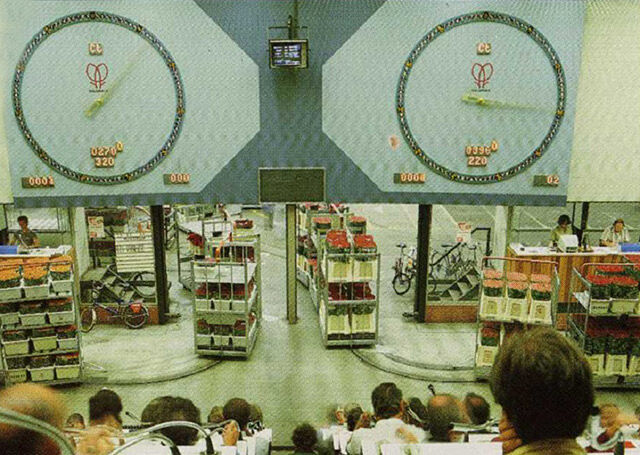
Photo: Fleurop archive
1989-2002
German reunification in 1989 brought many economic changes. Fleurop also felt the effects - especially the 500 or so florists from the former GDR. For decades, they had been subject to strict guidelines and regulations on how to run a specialist shop. Suddenly they were expected to operate independently in open competition and a free market. However, because contacts between florists in the East and West had never been broken off during the period of separation, they were able to enter into a mutual dialogue far better than other sectors.
The Fleurop committees decided that the 1990 general and supervisory meetings should be held in East Germany. Weimar was chosen as the venue and 3 October as the date. No one was aware that the meeting would take place on the day of German reunification. The main focus of the meeting was therefore the integration of florists from the East. Technically, it had already been possible to centralise invoicing. Organisational integration was more complex. Transitional arrangements helped to bridge the economic difficulties that would have arisen in the course of many new start-ups and reprivatisations. For example, admission fees and annual subscriptions were significantly reduced.
Another important topic was the evolving European market. The European Commission's aim was to create a single market without borders. This development was of little concern to florists, as the industry had already been international and cosmopolitan for years. However, buying patterns within Europe were slow to adapt. Gift-giving holidays such as Valentine's Day and Mother's Day were still rarely celebrated in eastern Germany. On the other hand, Women's Day on 8 March was very important. In France, Grandparents' Day was a popular reason to give flowers, while in Belgium it was Secretaries' Day. Fleurop adapted its marketing accordingly and tried to promote not only the established days but any occasion. This approach led to the slogan "Fleurop. There are many reasons".“
To keep up with the times, Fleurop launched its own website in 1997. In the first year, 12,000 orders were placed via the Internet. By 2000, sales were doubling every year.
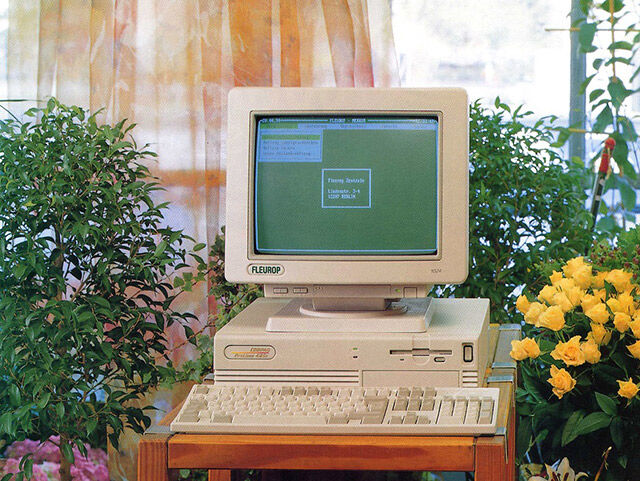
Photo: Fleurop archive
2002-2013
The early 2000s were once again characterised by constant change. The Internet, with all its possibilities, gave rise to countless visions. Not without risk: many companies speculated. But Fleurop managed to establish its own website as a long-term sales channel.
In addition to the technical innovations of the time, Fleurop faced another major change: in 2003, the limited liability company was converted into an unlisted public limited company. Since then, every Fleurop florist has owned a share. There were to be no outside shareholders. In this way, the grassroots democratic nature of the company was maintained.
Marketing also evolved and Fleurop found new ways of working together. Co-operations with other brands that appealed to the target group were successfully implemented across all media. The visual identity was also modernised. The green and white logo colours gave way to the black and yellow look of the international Fleurop and Interflora countries. The slogan for the new branding was the play on words "Fleurop brings it". This ambiguity was also incorporated into the campaigns - on ostrich enclosures in seven German zoos you could read: "This bouquet is brought to you by Fleurop".
Online marketing activities were also intensified. The website was redesigned for the third time in 2003. The first e-mail campaign for Valentine's Day and Mother's Day reached over 100,000 users. The Internet was not only interesting for advertising purposes. With the MerkurPortal, an intranet was created to facilitate communication and networking between florists as well as order processing.
In 2013, Fleurop took another successful step by creating two new sales channels: the flower trade and the floristry supplies trade. The idea of uniting Fleurop florists in an independent purchasing group and securing long-term favourable purchasing conditions was a success. Today, the FloristShop is a permanent fixture for florists and a price corrector in the industry. Together with reliable cooperation partners, several million flowers are sold every year.
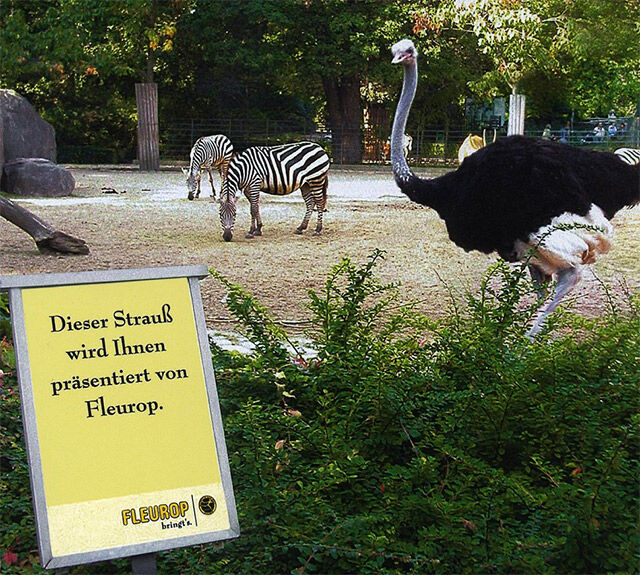
Photo: Fleurop archive
2013-2022
With its 20.20 strategy, Fleurop has set itself ambitious goals, with a particular focus on strengthening the industry. One focus is the commitment to climate protection. Fleurop supports projects to offset the CO2 emissions caused by the production and transport of cut flowers. On the website, you can make a donation with every bouquet you order and thus invest in climate protection.
Another focus is education and training, which continues to be promoted through various campaigns: Fleurops Junge Wilden was founded with the aim of making the profession of florist more attractive to the public in order to get young people interested in floristry.
The German Floristry Championship in Berlin, which were organised in cooperation with the German Florists' Association and will take place every two years from 2012 to 2018, have exceeded everyone's expectations, attracting hundreds of thousands of people to the profession. Trainees also had a chance to shine: The parallel event, called the Fleurops Junge Wilde Azubi-Cup, gave apprentices the chance to showcase their skills in public - with the guidance and support of Fleurops Junge Wilde.
Prospective florists and interested parties are also supported with offers such as the "Junge Talente" '(Young Talents) page on Facebook, with participation opportunities and competitions, and the "Pflück Dein Glück" (Pluck Your Happiness) website, launched in 2018.
And that's not all: in January 2019, the Fleurop Academy online and offline platform was presented at the International Plant Fair (IPM) in Essen: The Fleurop Academy supports both florists in training and trained florists in "lifelong learning". The Academy is also open to other training providers and is intended to benefit the entire industry.
In 2016, the cross-media Fleurop campaign "Jeder verdient Blumen" (Everyone deserves flowers9 was a great success on TV, in social media, with event and live communication and in the company's own print media. A total of six TV spots were shown on ARD during prime time shortly before the news. The commercials, which were shot in South Africa, were awarded the prestigious "ADC-Nagel in Bronze" (ADC Bronze Nail) advertising prize by the Art Directors Club (ADC) in 2017. In addition to these year-round campaigns, gift-giving holidays such as Valentine's Day and Mother's Day remain important pillars of marketing activity. Mother's Day 2019 was celebrated with the campaign "Die Zeiten ändern sich. Mama bleibt die Beste." (Times are changing. Mom remains the best.) through offline activities such as outdoor advertising and online activities on high-reach social media channels. Fleurop is also active in cultural sponsorship: exclusive collaborations with the Staatstheater Nuremberg and the Deutsche Oper Berlin make floral craftsmanship accessible to a wide audience and create emotional moments - both on stage and in the audience.
2023-present
With the 20.25 digitalisation strategy, the year 2023 is all about change to mark the company's 115th anniversary. The first major milestone was the launch of the redesigned Fleurop online shop on 9 January 2023. The relaunch of the website puts the focus on the partner network: firstly, by switching to a new visual world that shows the floristry products from different perspectives and in all their sizes. In addition, the work of the florists is specifically visualised through photo motifs with models in the Fleurop setting. Our unique selling point - the production of the piece by local florists and the personal delivery - is visually at the centre of the new visual world. On the other hand, the new online shop provides the florists with a variety of individualisation options, making the network, above all, one thing: Self-determined. From the summer of 2023, florists will be able to define their own delivery area, personal capacities, delivery calendars and, in the future, their own product range. Finally, the new online shop also includes integrated micro-websites that showcase local specialist shops. This feature of the new website also supports the focus on individuality of the Fleurop network.
In order to put the partner florists, on whom our network is based, in the media spotlight, a TV commercial was produced in 2023, highlighting both the craftsmanship of florists and the florists in the Fleurop network. The protagonists of the spot are even real Fleurop partners, whom we were able to win over through an internal competition. The well-known Dutch director Johan Kramer realised the production. It was broadcast just before Valentine's Day, just before the prime time news at 19:43 on ARD.
Another highlight of the year was the World Floristry Championship in Manchester, organised by our colleagues at Interflora UK. The title went to Germany for the second time in 38 years, with German contestant Nicolaus Peters beating off competition from 19 other nations. He impressed with his down-to-earth and relaxed manner, creating works of floral art that demonstrated a deep connection with nature and an unrivalled sense of aesthetics. As always, we are delighted to have supported the candidate financially and in terms of media presence and coverage. On behalf of the entire Fleurop network, we congratulate Nicolaus Peters on his well-deserved victory.













